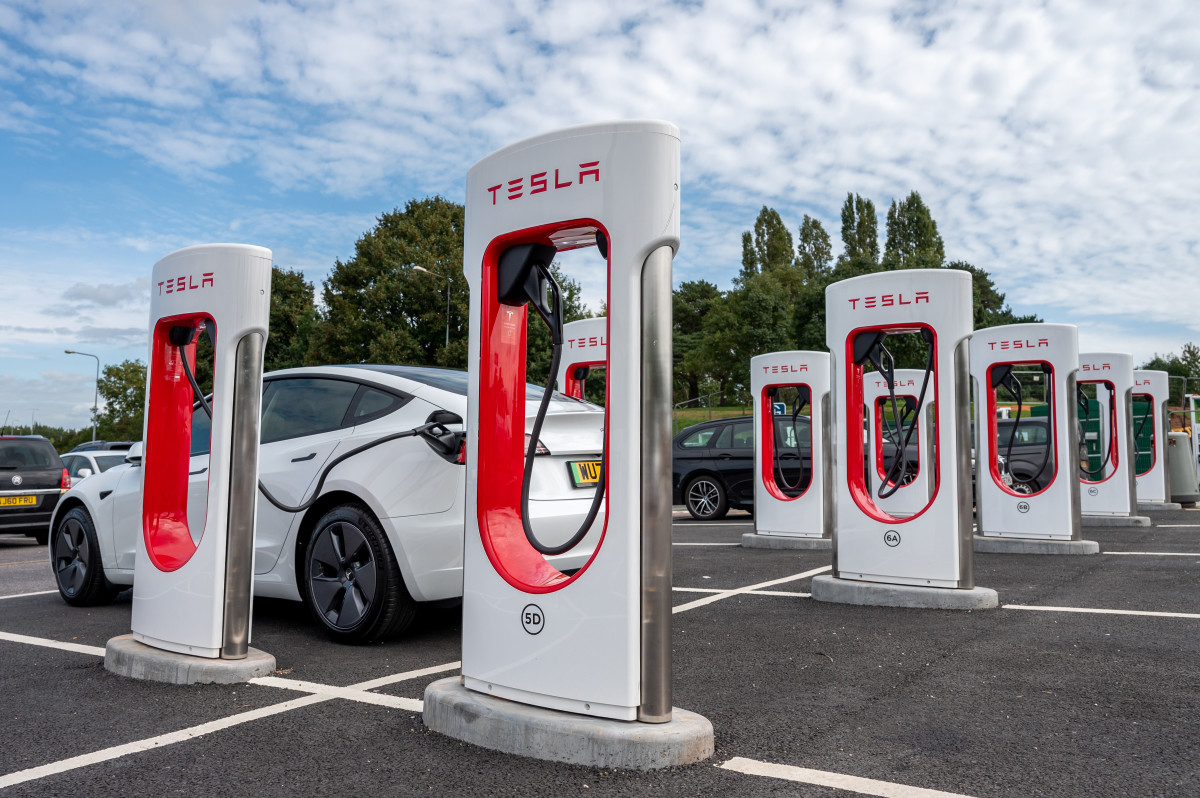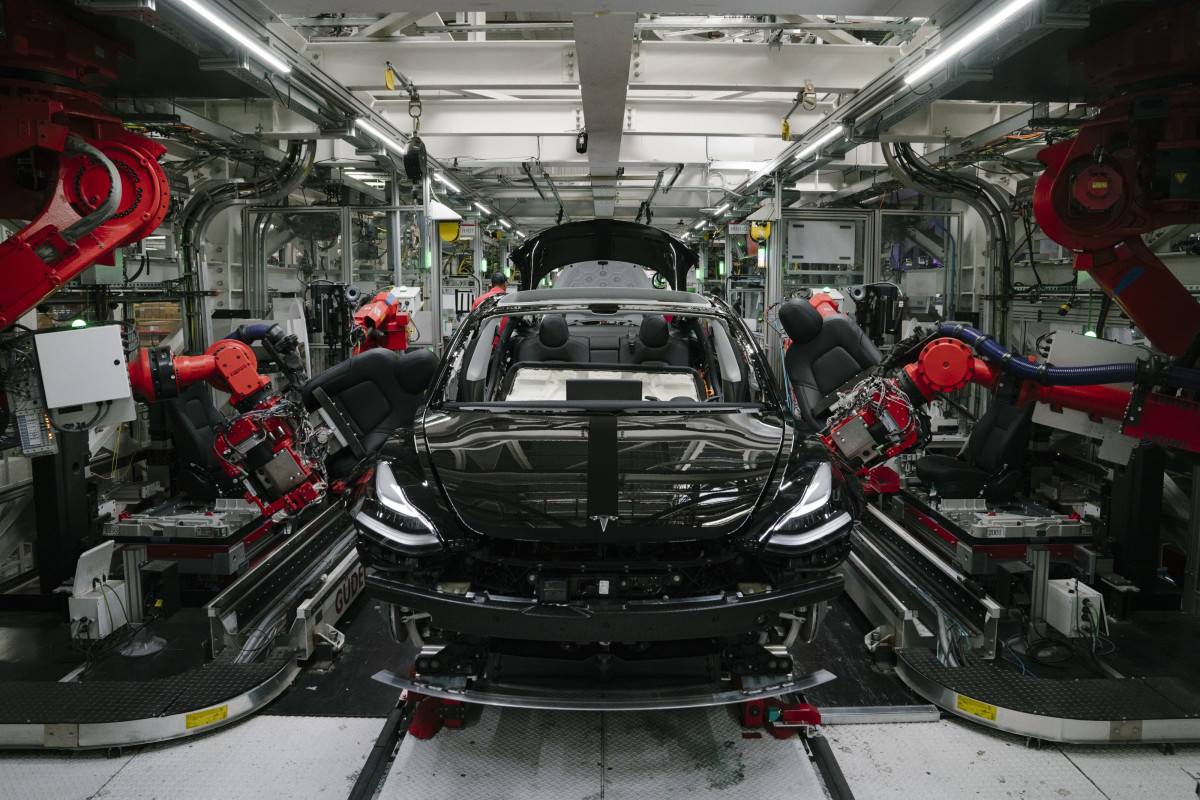
The electric vehicle story seems to have changed lately from an expectation of rapid adoption and frantic production to a reality of cooling interest and pullbacks in investments.
General Motors (GM) -) pushed back its EV targets and postponed its coming EV lineup in what it called an effort to ensure profitability; Ford (F) -) postponed $12 billion in EV investments; Hertz is slowing the electrification of its fleets, in part citing weak resale value; and Tesla (TSLA) -) remains engaged in a price war meant to entice skeptical buyers.
Widespread adoption seems to have hit something of a snag.
Related: Tesla bulls say electric vehicle demand is soaring. Here's what's really happening
While some data show that EV adoption is on the rise, with EV sales making up a record 7.9% of total industry sales in the third quarter, consumer interest is still flagging.
Polling from S&P Global Mobility found in May that only 67% of respondents are open to buying an EV, a significant reduction from the 86% of respondents that were open to such a purchase in 2021.
While EV adoption might be increasing, the growth in the sector is slowing as consumer concerns over both price and range cool interest.
Price biggest hurdle to EV adoption: S&P
It's no coincidence that Tesla remains so committed to slashing its prices; the biggest pressure point in the transition to EVs, according to S&P, is price.
"Multiple hurdles need to be cleared to achieve widespread EV adoption," S&P wrote. "Buyers may want to wait for the next technological advance, or have concerns about charging time and charger availability, but in the end, consumer finances — not engineering — lead the current buying resistance to EVs."
Part of the gap in the adoption curve additionally involves differences between early adopters and the masses.
Jeremy Michalek, Carnegie Mellon professor of engineering and public policy, told TheStreet in August that the early adopters tend to have garages, meaning they can charge their EVs overnight and at home. For the second, larger wave of adopters who don't have access to overnight charging, better charging infrastructure, more robust batteries and longer vehicle range are key concerns.
Related: Mustang Mach-E probe reveals electric vehicle adoption issues
EV ownership equates to $17 a gallon: Texas group
An October report by the Texas Public Policy Foundation found that, after accounting for all of the hidden costs involved in owning an EV, that price becomes much more significant than an internal combustion engine vehicle.
The foundation is a conservative think tank that according to 2012 tax filings was funded predominantly by Exxon Mobil, Chevron and the Koch brothers. The organization, according to the New York Times, has been attempting for years to promote fossil fuels while inciting a pullback in America's transition to renewable energy.
The group has campaigned against green energy, and last year an executive at the organization tweeted: "Today, I’m thankful to live a high-carbon lifestyle and wish the rest of the world could too. Energy poverty = poverty. Decarbonization is dangerous and deadly."
The group's report adds up the costs of government subsidies, charging equipment and the added strain on the electric grid, claiming that the "true cost of fueling an EV would equate to an EV owner paying $17.33 per gallon of gasoline."
When ICE owners pay for a gallon of gasoline, the report says, they are paying for the "entire infrastructure to refine, transport and market that gasoline."
"When an EV owner connects to the electric grid, how much are they paying for the extra generation, transmission, and distribution costs that they are imposing on the grid, and will those embedded costs rise over time?"
The report identifies three different areas of hidden EV ownership costs: the first deals with direct subsidies, such as the $7,500 federal tax credit. The second deals with indirect subsidies, notably an avoidance of state and federal fuel taxes.
This, the report says, is problematic as such taxes are used to fund road construction and maintenance; since EVs are heavier than comparable ICE vehicles, EV owners ought to be paying more in fuel taxes, rather than less.
A component of this indirect subsidy deals with the extra costs placed on the electric grid by EVs.
"Generation, transmission, distribution and overhead costs for utilities are all affected by EVs, and it is crucial for the future of the electric grid that EVs charge at times that reduce demand volatility rather than increase it as is often the case today," the report says.
The positive view of EV adoption
Consumer Reports, however, found in May that electrifying the entire U.S. light-duty vehicle fleet by 2050 would require less than 1% growth per year in electricity generation. The report found that if 25% of the entire U.S. passenger vehicle fleet was electric by 2032, the grid could meet that demand by only experiencing a 6% growth in electricity generation.
Lindsay Buckley, spokesperson for the California Energy Commission, said last year that EV charging accounted for less than 1% of the grid's total load during peak hours. By 2030, that number is expected to be around 5%, a “small amount” of added demand.

While highlighting electrification subsidies, the report ignores those subsidies that exist for fossil fuels. According to an August study by the International Monetary Fund, fossil fuel subsidies surged to a record $7 trillion last year.
The IMF projected that if these existing fossil fuel subsidies were scrapped, 1.6 million premature deaths could be prevented and the world could get a little closer to achieving its global warming targets.
"If governments removed explicit subsidies and imposed corrective taxes, fuel prices would increase," the IMF wrote. "This would lead firms and households to consider environmental costs when making consumption and investment decisions. The result would be cutting global carbon-dioxide emissions significantly, cleaner air, less lung and heart disease, and more fiscal space for governments."
The final category of the foundation's report involves regulatory electrification and emissions mandates.
Combined, the report found that these hidden costs add around $48,000 to the cost of an average model-year 2021 EV over 10 years.
Even with recently slashed prices and tax incentives, the report said, EVs will remain more expensive than their internal-combustion-engine counterparts for years without "increased and sustained government favors."
A key component of EV costs revolves around their battery components. And while EVs are generally a greener solution to travel (depending on the energy makeup of the grid they charge on), the raw materials needed to make their batteries are somewhat problematic.
Both cobalt and lithium have been linked to environmental concerns and human rights issues, according to the Times. Mining cobalt produces hazardous slag that leaches into the surrounding environment; mining lithium uses an enormous amount of groundwater.
Toyota, which remains staunchly committed to hybrids, said in May that the same raw material used for one long-range EV could instead be used to produce 90 hybrids. The overall carbon reduction of those hybrids, according to Toyota, would be 37 times higher than that of a single EV.
Get investment guidance from trusted portfolio managers without the management fees. Sign up for Action Alerts PLUS now.







